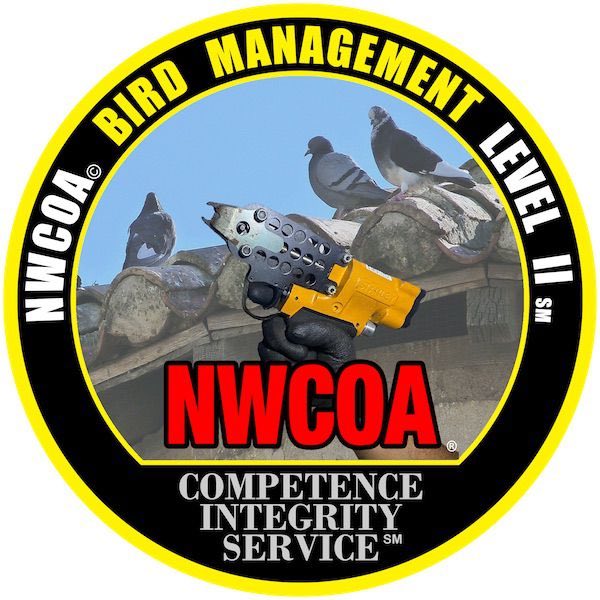Bat Removal
Ohio Bat Removal & Control in the Counties of Knox, Licking, Franklin, Richland and Delaware

We Resolve Bat Problems
Bat Removal & Control
Bats are one of nature’s most misunderstood animals. Although they appear to be dangerous, they are essential for the environment. They are pollinators and eat insects that can harm humans and their ecosystem.
Yet, as wonderful as they may be, bats can also become a nuisance to humans. This can happen when living in a home that may appeal to their natural instincts. For example, they could use your attic as a warm place to hibernate or your house’s surroundings for hunting.
Whatever the case may be, it is undeniable that they can become a problem where bat removal is vital. The good news is that there are humane and safe ways to remove bats from your home. Here is everything you need to know about bats, infestations, and when to call professionals for bat removal services.
The Bats of Ohio
3 Common North American Bats
There are several types of bats all over the world. But, in the US and Canada, there is a high chance that you’ll see at least one of these over the course of your lifetime. Ranging in size and specialty, these mammals are nature’s insect repellants.
Little Brown Bat
The little brown bat is one of the most encountered bats in North America. These winged mammals are tiny, about the size of a human thumb. Although small, these mighty bats eat up to about 1,200 insects an hour. This makes them fantastic mosquito repellants.
Since mosquitoes are their favorite snack, farmers appreciate these bats for pest control. Plus, they eat mosquitoes carrying diseases like the West Nile Virus. This makes our nighttime activities much safer and controlled.
crawlspace Cleanup
Like attics, wildlife animals seek out crawlspaces. But what do they do when in there? They leave their hazardous droppings and damage insulation, wires and plumbing pipes. And how about the foul odor also left behind?
It is crucial to repair these damages so as not to spread disease.
Fox Squirrel
The fox squirrel (Sciurus niger) is the largest of the four common squirrels in Ohio. They are not an original inhabitant in Ohio as the heavily wooded forest kept them away; however, as the dense forests decreased with more open spaces, the fox squirrel began to settle.
Fox squirrels have two types of nests; leaf and den. Leaf nests are built with leaves and twigs and in the crotches of tree branches. They construct their dens in hollow tree trunks or branches.

Bat Removal and Trapping
Bat Behavior
Bats are fascinating creatures with interesting abilities. Even so, it can be difficult to understand these behaviors when they are negatively affecting your home. While they can be pests, their intentions are good. Here is everything you should know about bat behavior.
Echolocation
Echolocation works as eyes for bats. Using a sonar-like system, bats can sense their environment with this adaptation. Some bats have evolved to make this more enhanced, while others don’t use echolocation at all.
Diet
Bats are insectivores, meaning that their diets consist of bugs. They are also nocturnal, spending most of their time hunting at night. This makes them powerful pest controllers, eating up to an average of 2,000 mosquitoes a night. Some rarer species consume different types of food, like animal blood, fruit, or plants.
Cleanliness
Contrary to popular belief, bats are actually very clean creatures. Like cats, bats clean themselves and spend much of their time grooming their fur. Aside from appearance, this helps protect them from parasites.
Hibernation
While it does depend on the species, many bats hibernate during the winter. They love to sleep in caves or enclosed spaces to stay warm. With that in mind, this can be a significant reason they may be in an attic, wall, or chimney during the winter.
Flying
Did you know that bats are the only known mammals that have the ability to fly? Certain species can only glide for short distances, but most of them can travel for a long time. Their wings are like a human hand, stretched and modified for flight.
Maternity
Female bats give birth to one pup dependent on them for several months. Pups cling to their adult mother without the ability to fly until they are too large to be carried. Once they are old enough, they are left in a nursery colony while the adults hunt for food.
What We Know About Bats
Bat Myths
It is natural to feel wary of bats due to their complicated reputation. However, many things about them are false. While bat removal is crucial, it is unlikely that the bats are there for harmful reasons. Here are some facts to debunk common myths associated with bats.
Bats Are Dangerous
While certain bats do carry rabies, this is very rare. Bats are usually harmless, and their role in the environment is very important. Most of the danger comes from diseases they carry, specifically their droppings (guano).
Bats Are Common
Habitasse vivamus class porta nascetur sollicitudin in justo dapibus per volutpat adipiscing
Bats Are Blind
Contrary to popular belief, bats are not blind. They do have a reduced ability to see, but they are not helpless. They use echolocation to keep track of their surroundings. Some species have adapted heightened senses that allow them to see with their naked eye.
All Bats Hibernate
While many species hibernate, some are active all year round. Some species never hibernate or migrate. Others like the Spotted Bat utilize migration seasons to travel to warmer locations during the winter.
Bats Are Pests
They can be if they come into your home, but they are not pests to the environment. In fact, there are essential for insect control and containing harmful animals. Scientists are actually trying to help them recover their populations from disease and habitat changes.
Bat Troubles To Watch Out For
Bat Hazards
Most bats are harmless on their own, it’s the environment around them that is a threat. Most bat hazards come from their droppings, otherwise known as Guano. Their droppings can carry spores that release dangerous bacteria into your home. Here is everything you need to know about some of the health hazards of bats and Guano. Remember to schedule for bat removal services as it is vital.
Histoplasmosis
A fungus found nationwide and increased by the Mississippi and Ohio rivers, Histoplasmosis is a harmful bacteria typically found in bird and bat droppings and it is possible for it to affect humans. Histoplasmosis exposure can resemble flu-like symptoms. Degrees of infection range from mild to severe, so it is important to be mindful of its side effects.
Rabies
Although it is commonly believed that bats are aggressive, this isn’t true. They are wild animals, so a bat will defend itself if you attempt to handle it on your own. With that in mind, handling a bat with your bare hands is never a good idea. Removed safely, a bat won’t threaten anyone in the household.
But, there are rare instances where a bat may have rabies. Rabies is dangerous and fatal. If a person is scratched or bitten by a bat, thoroughly clean the wound and contact health professionals immediately. If the bat is dead, refrigerate (Don’t freeze) it and contact your local health department immediately.
Bat Guano and Infestations










Bat Removal: Get Professional Help
Most bats are harmless, but the hazards they bring in from their environmental surroundings can make things difficult. Since they squeeze themselves into walls, attics, or chimneys, they can be hard to find.
The Wilkins Wildlife bat removal professionals are trained to remove bats safely and humanely. We understand how significant bats are to the environment, but we also want to keep your home safe. In addition to bat removal, we can prevent bat infestations from occurring in the future using our state-of-the-art exclusion methods.








